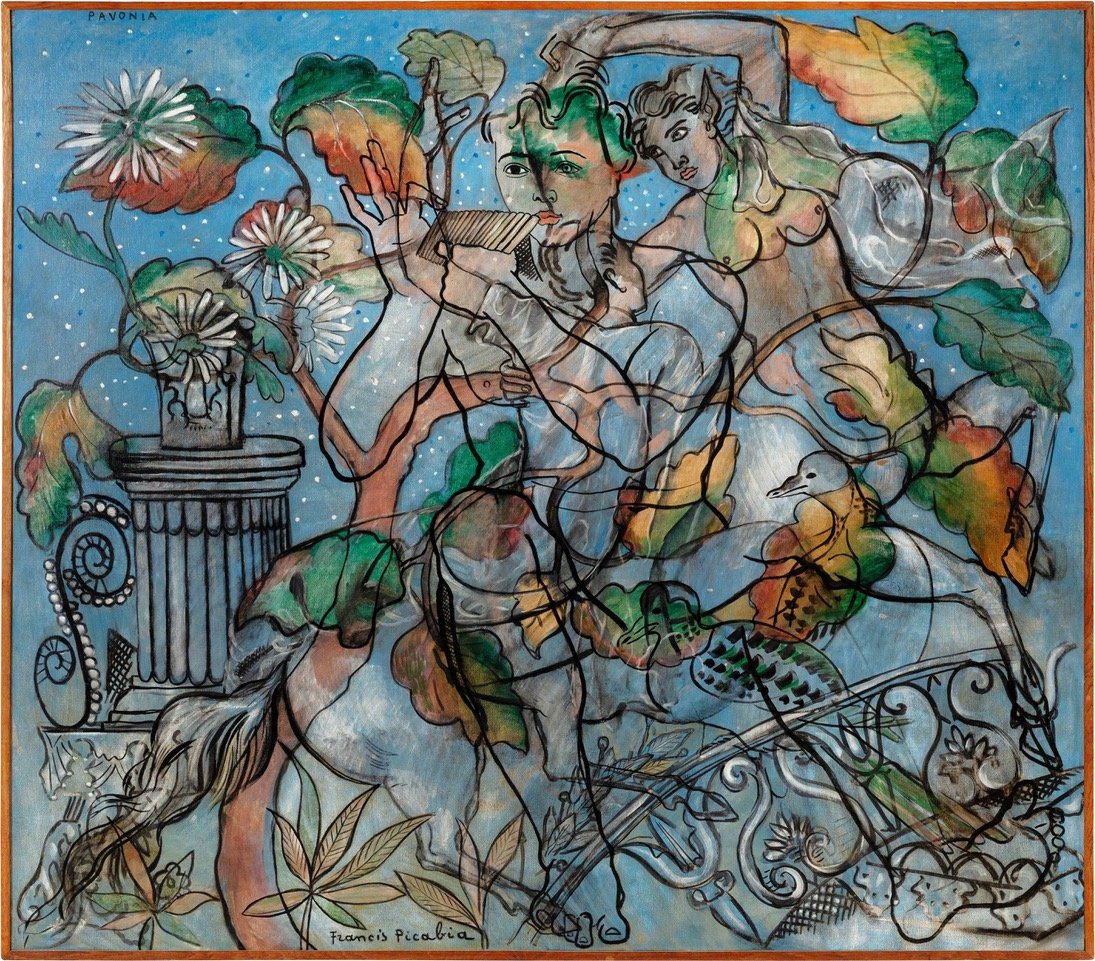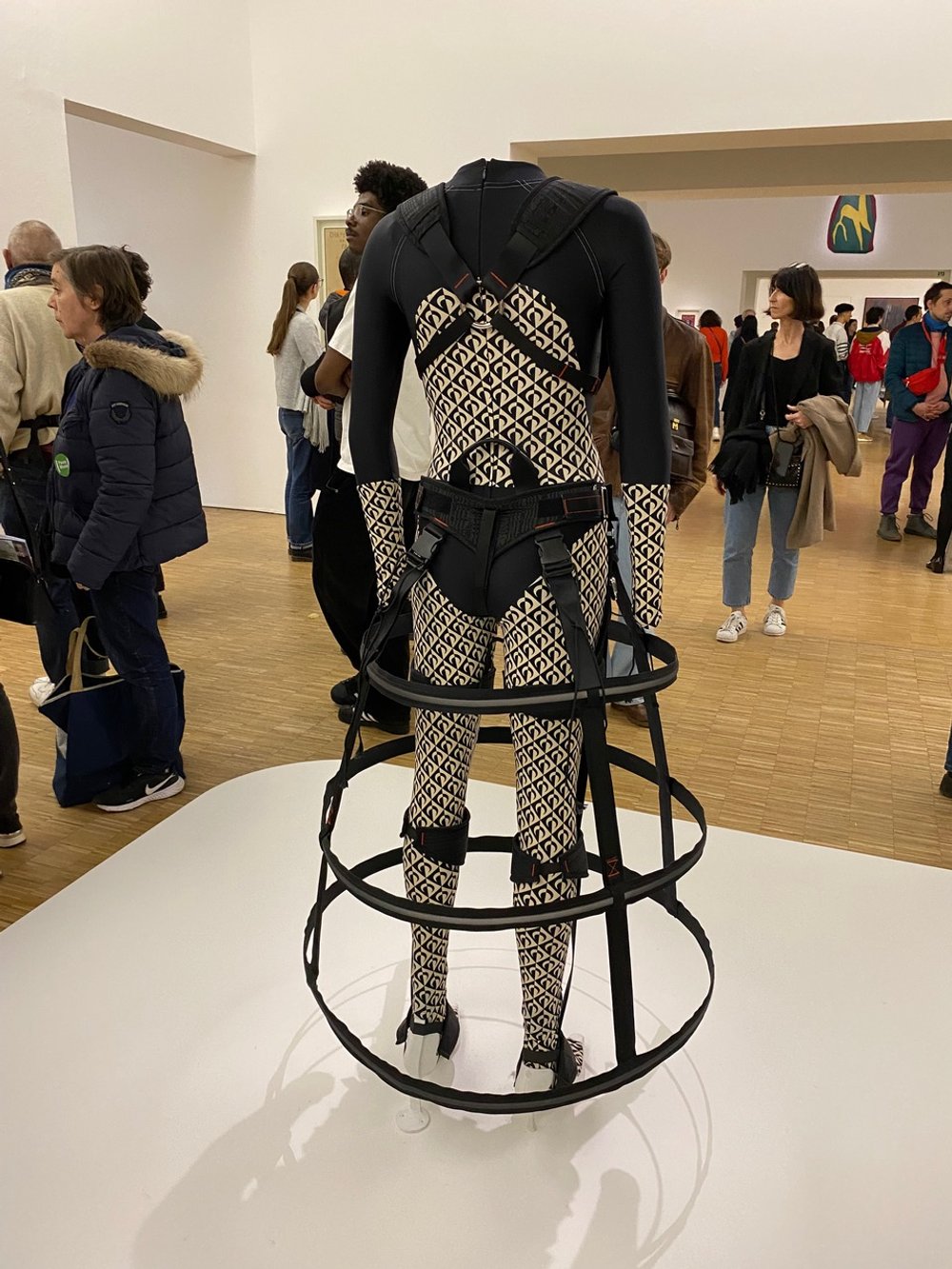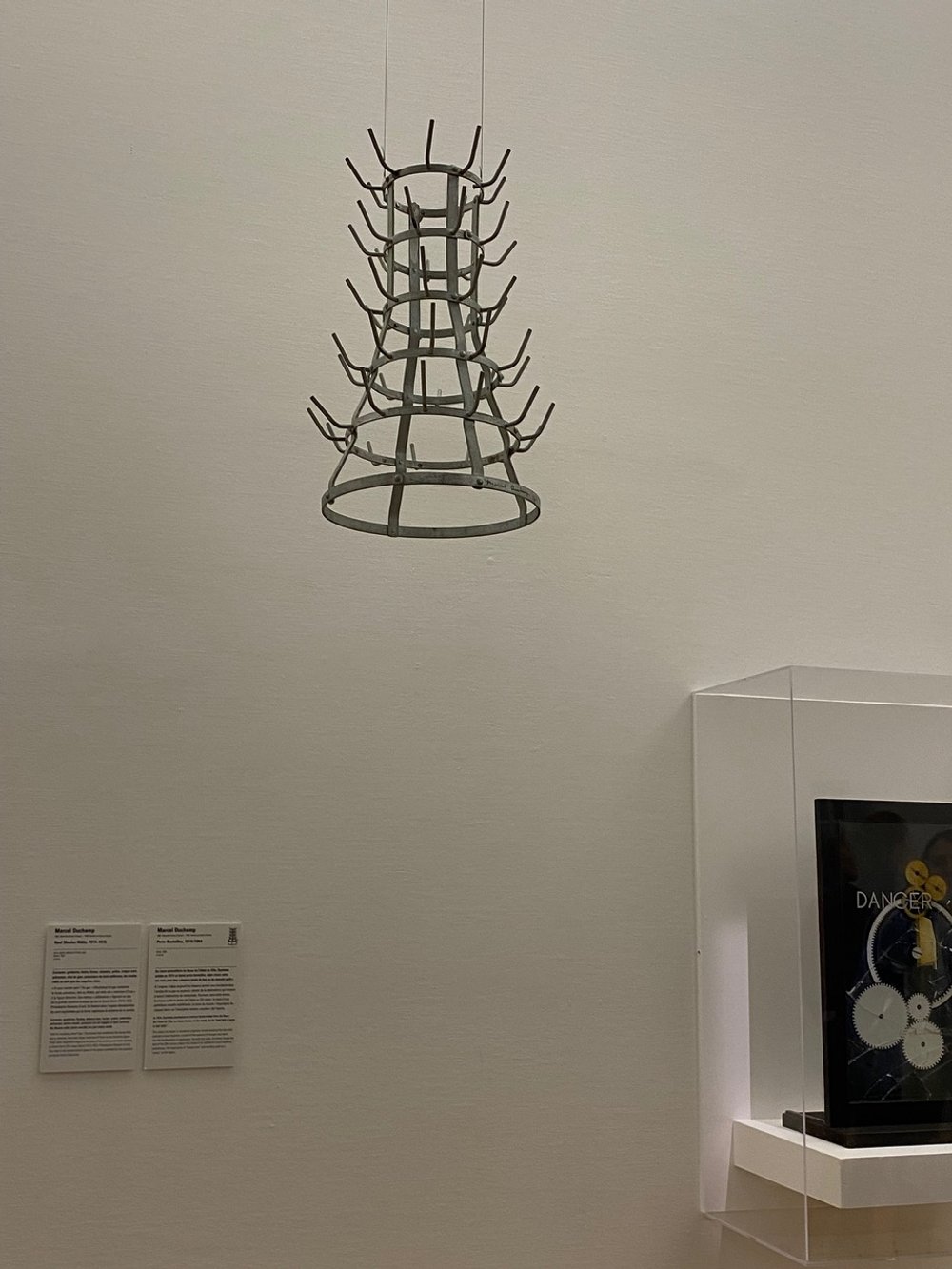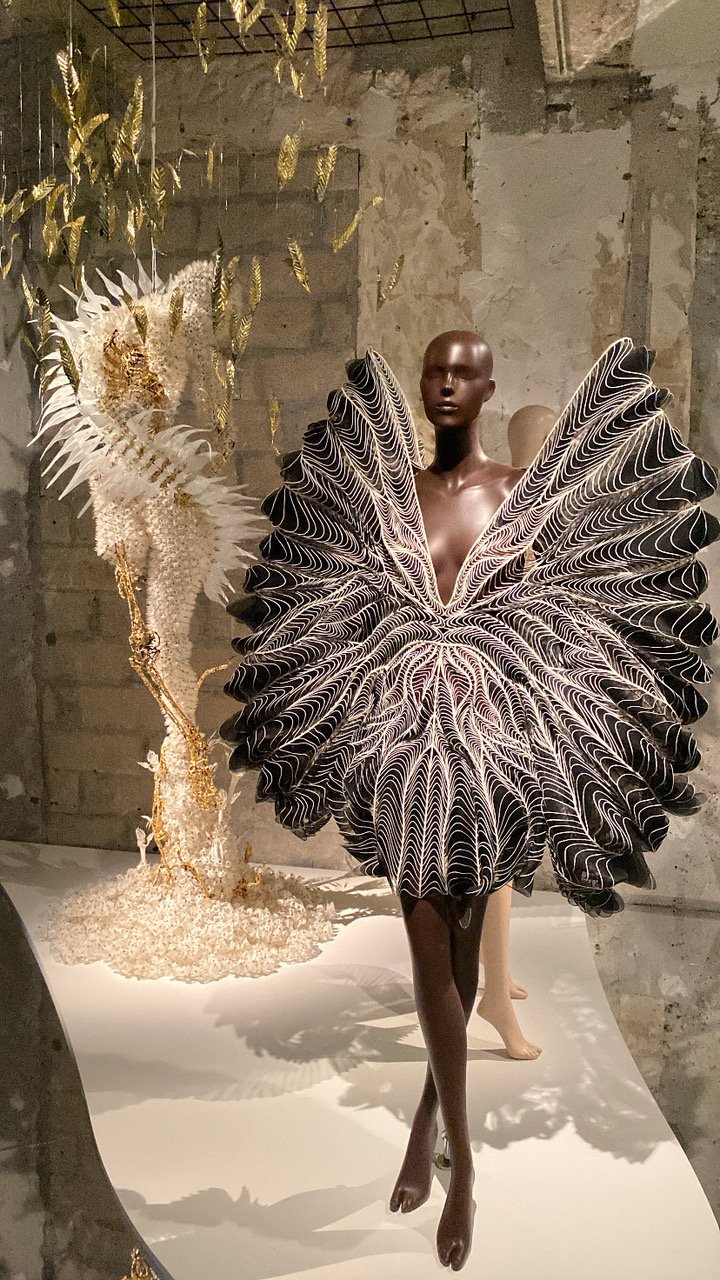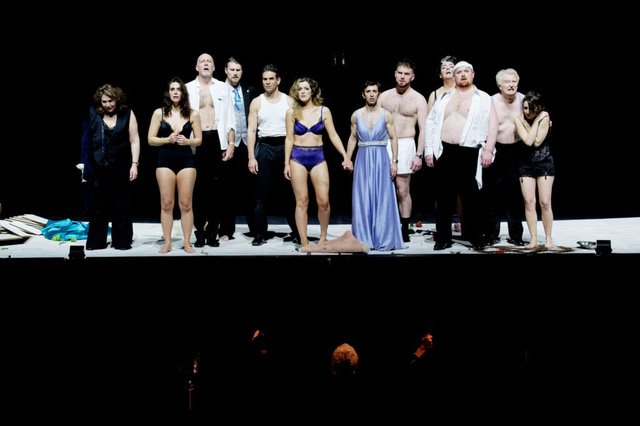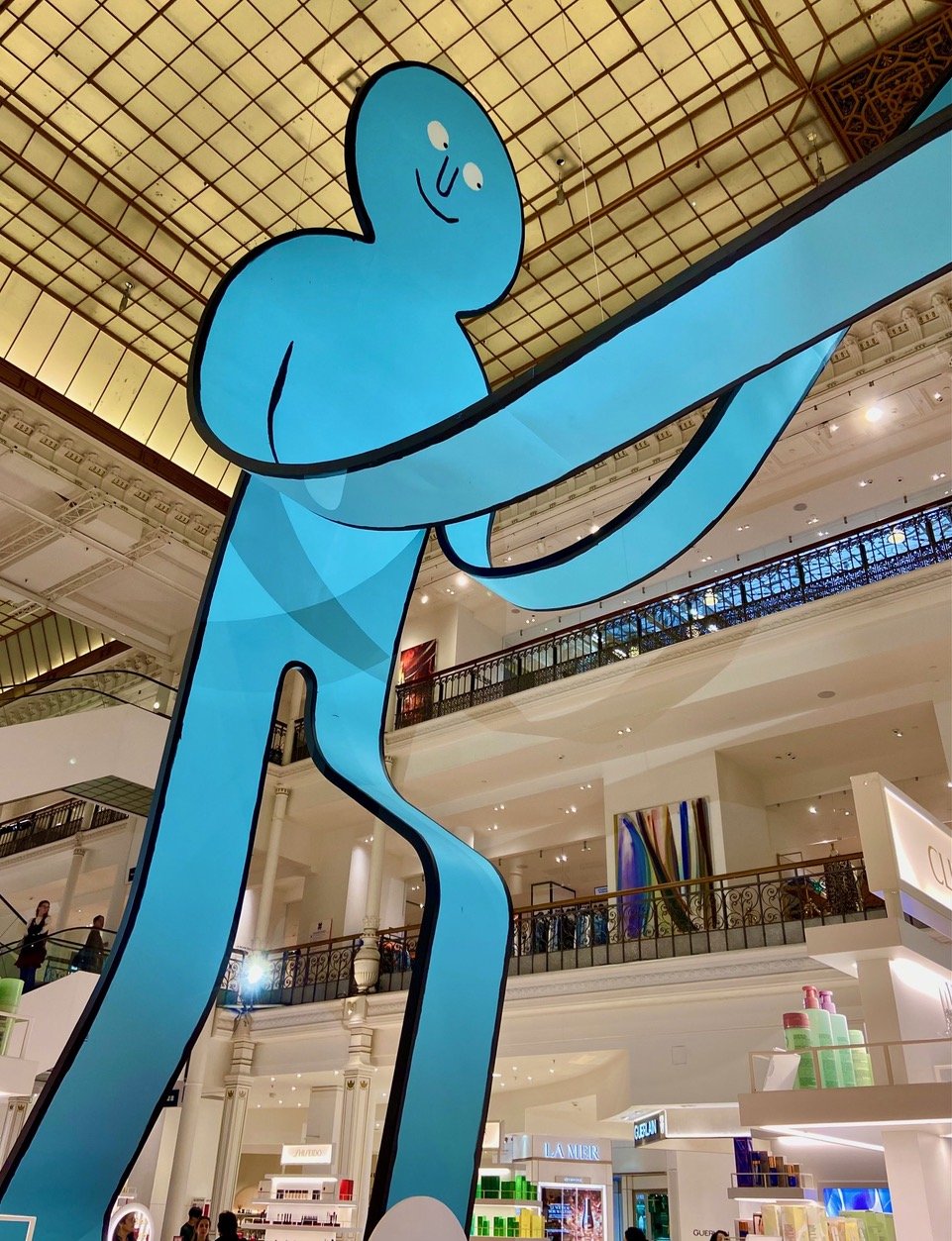Some Good Stuff, or what I’ve been up to lately
Newsletter 03.24.2024
Bienvenue and welcome back to Musée Musings, your idiosyncratic guide to Paris and art. Today I want to tell you about a few of the zillion things I have been doing lately, in between a disastrous ‘press junket’ and traveling to and from the Dordogne for yet another canceled signing of a compromis de vente. The third attempt for signing the compromis is scheduled for Monday, tomorrow. And if that happens I will be a significant step closer to ending a chapter of my life which started out swell but which, thanks to the French legal system, has devolved into a seemingly never-ending nightmare.
Let’s start with the fun stuff. Three fashion exhibitions! The first one was a temporary exhibition at the Musée Yves Saint Laurent entitled, “Yves Saint Laurent: Transparences, Les pouvoir des matières (the power of materials).” The English title is, “Sheer: the diaphanous creations of Yves Saint Laurent”. (Fig 1) The exhibition weaves its way through the museum’s permanent collection, so if you are visiting for the first time, you will also learn a lot about Saint Laurent and his working method.
Figure 1. Yves Saint Laurent, ‘Transparences’
As the gallery sheet points out, “Few articles of clothing are entirely transparent. In theory, transparency is incompatible with the very functions of clothing, which is to cover the body, conceal or protect it.” That and this. On wall texts and recorded reflections, we are told how much Yves Saint Laurent respected women. That he sought to celebrate them, their beauty, their strength. “I think I’ve done the best I could for the liberation of women. I created clothes that were perfectly in sync with the twenty-first century.” I can accept that statement if we’re talking about “Le Smoking,” The tuxedo that Saint Laurent created for his Autumn-Winter 1966 collection, (Fig 2) but I’m not convinced about the liberating nature of diaphanous tops and butt bearing bottoms. (Figs 3, 4) Is a woman really more liberated when her nipples are showing? Or is someone (say Harvey Weinstein or Bill Moyers or Matt Lauer - okay I’ll stop) looking at someone wearing a diaphanous top, more likely to be the one taking liberties?
Figure 2. Le Smoking, Yves Saint Laurent (at right, YSL with Catherine Deneuve)
Figure 3. Jean Shrimpton modeling Yves Saint Laurent
Figure 4. Yves Saint Laurent, 1970 photographer Jeanloup Sieff
The exhibition unfolds thematically and includes works by artists like Francis Picabia (who you can also now see at the Picasso Museum in the exhibition on Léonce Rosenberg’s apartment) (Figs 5, 6) whose overlapping diaphanous blocks of color are resonate beautifully with Saint Laurent’s overlaying diaphanous fabrics. The exhibition is a visual delight, how could it be otherwise. And it is intellectually engaging, with videos of the women who worked with Saint Laurent and the curator and scenographer who created the exhibition, talking about their work. In the end, the exhibition is a wee bit self serving. When I told Ginevra about it, she sent me a photograph from Yves Saint Laurent’s Autumn-Winter 2024/ 2025 Collection and yep, see through blouses are back! (Figs 7, 8, 9)
Figure 5. Picabia for Léonce Rosenberg, Musée Picasso
Figure 6. Mirror reflection of dresses in YSL exhibition
Figure 7. Marissa Berenson in one of Yves Saint Laurent original diaphanous tops
Figure 8. Olivia Wilde in one of Yves Saint Laurent diaphanous tops, AW 24
Figure 9 Yves Saint Laurent fashion show, AW 24 (Autumn-Winter 2024-25)
The second fashion exhibition was at the Centre Pompidou. Called “Bridging appearances,” it’s sort of an homage to the exhibitions that were held in 2022, at six Paris museums, on the 60th anniversary of Saint Laurent’s first fashion show. I wrote about them here: Mondrians and Madeleines & Mondrians and Madeleines part deux. In those exhibitions Yves Saint Laurent’s most emblematic and iconic pieces were displayed alongside the works that inspired him. (Fig 10)
Figure 10. Exhibit, Musée Picasso, portrait of woman wearing top designed by Schiaparelli interpreted by YSL
In the exhibition currently at the Pompidou, rather than pairing works of art that inspired any particular fashion designer, one of the museum’s curators has selected pieces by various fashion designers and paired them with paintings, sculptures, and furniture in the museum’s permanent collection. Among the designers are dead ones like Lanvin, Chanel, Dior and Yves Saint Laurent, in conversation with artists like Ellsworth Kelly (Dior) and Henri Matisse (with YSL). There are also fashion designers who are still creating collections, whose work has been the subject of exhibitions - like Jean Paul Gaultier (Wilhelm Freddie) and Martin Margiela (Giorgio de Chirico). One of the most interesting pairings is Azzedine Alaïa and furniture by Marcel Breuer.
Also here are young designers, less well known ones mostly, among them a designer who presented his work during the pandemic on Instagram and Tiktok. And in a category all by herself is Iris van Herpen here paired with Marc Chagall. She is currently enjoying quite a moment - as the subject of an exhibition at the Musée des Arts Décoratifs (more about that in a second) (Figs 11 - 18)
Figure 11. Dress by Azzedine Alaïa paired with table and chairs by Marcel Breuer
Figure 12. Iconic dress by Dior
Figure 13. Was paired with this painting by Ellsworth Kelly
Figure 14. This outfit by Yamamoto paired with …
Figure 15. This painting by Kazua Shagura
Figure 16. And this by Marine Serra paired with
Figure 17. A Duchamp Readymade
Figure 18. One final comparison, Ulrike Ottinger painting with Kevin Germanier fashion
It was fun, a treasure hunt really. (Fig 19 ) Walking around the museum’s 5th floor with the gallery sheet, looking for the 17 works in the permanent collection paired with the 17 fashion pieces. Some of the connections are surprising, some are puzzling, some are simply delightful. Although, reading the gallery text, delightful is not what this curator was after, but rather some sort of postmodern, ‘ism’ filled exegesis. Which is fine. Read what you want, look at what strikes your fancy and enjoy!
Figure 19. Bridging Appearances map
The third exhibition, at MAD is completely over the top. It reminded me of the retrospective exhibition for Thierry Mugler held a few years ago, (which I wrote about here: Being Muglerized) right before his death. (Fig 20) That one was a fitting tribute, especially since Mugler was alive to bask in this celebration of his work.
Figure 20. Thierry Mugler exhibition poster, MAD 2022
Iris van Herpen turns 40 this year. Her versatility, the range of her inspirations and the way she makes fashion pieces out of them, is breathtaking. So is the way in which the museum’s curators have called upon other museums, to lend works of art that explain and amplify van Herpen’s visual, intellectual and historical references. The exhibition is divided into 11 sections but they are not all so easily separated - like Water and Dreams and Sensory Sea Life; or Cabinets of Curiosities and The Mythology of Fear. And just when you think, wait a minute, this woman is an artist, not a fashion designer, you walk up a staircase along which is a wall of women wearing her fashions - Beyonce, Lady Gaga, Naomi Campbell, Rihanna, Natalie Portman, Kate Moss, Tilda Swinton, Cate Blanchett. And there are videos of her fashion shows so you can see actual women (well models) walking around in her creations. There are videos of her in her work space for you to get an idea of how she creates her pieces, the technology behind so many of the pieces. And then there are all the fabulous paintings and sculptures, shells and skeletons, videos and light shows that add even more layers of pleasure to this fantastic exhibition. It’s on through April, so if you are in Paris now and haven’t seen the exhibition yet, go, because if you absolutely love it, you’ll have time to see it again! (Figs 22 - 28)
Figure 21. Iris van Herpen, Sculpting the Senses, MAD 2024
Figure 22. Van Herpen, Sea Life
Figure 23. Van Herpen, MAD
Figure 24. Van Herpen, MAD
Figure 25. Fashion show, Van Herpen
Figure 26. Beyonce performing in Van Herpen
Figure 27. Tilda Swinton in Van Herpen
Figure 28, Nathalie Portman in Van Herpen
What else, my new friend Melinda who, like me, lives in both Paris and San Francisco, and who, like me, is more than a little obsessed with Marcel Proust, told me about a series of Tuesday lectures at the Mairie (City Hall) of the 11th arrondissement, a short walk from my apartment. This year’s subject is Food. Melinda alerted me to the title of the next lecture, "La cuisine chez Marcel Proust,” (Fig 29) about which I wrote here: If you can eat it, its not art. Of course I went, the huge meeting room was packed. The lecturer had a mellifluous voice which she put to good use, reading passages from Proust and chanting the slogans that the various petits metiers would repeat to attract customers.
Figure 29. Proust Lecture at Mairie, 11e, Paris
At the next Tuesday’s lecture, I learned about Antonin Carême, the chef who invented the toque and who fought for the professionalization of the metier of chef. I knew his name, the grand dining room of the California Culinary Academy was called the Carême room. If Carême had grown up rich instead of dirt poor, he would have become an architect. Instead, he created large pièces montées – table decorations sculpted in sugar - in the shape of classical buildings. Since he worked for people in power and since he worked during the first third of the 19th century, he sometimes had to get out of town. From 1803 to 1814, Carême worked as chef-pâtissier for Talleyrand, Napoleon’s diplomat in chief. And then Carême was chef de cuisine for Tsar Alexander in Paris. After the fall of Napoleon, he went to London and worked for the prince regent, the future King George IV. Then there was a brief stint in St. Petersburg and Vienna. When it was safe to return to Paris, he did, and for four years, he was the chef of the wealthiest man in Paris, the banker James de Rothschild. Carême died at age 49, either from inhaling too much charcoal or eating too much sugar. Both were occupational hazards of a pastry chef. (Figs 30, 31)
Figure 30. Antonin Carême who enhanced the position of chefs
Figure 31. Carême couldn’t become an architect so he made architectural culinary creations
This week’s lecture wasn’t quite as revelatory. It was about the bars, cafés, restaurants and dance halls in Paris between the wars. For me, it was mostly a review of an exhibition I saw at the Cite de l’Architecture et Patrimoine, “Art Deco, France-America. Mutual Emulation”(Fig 32), which was a lot more interesting than its title and which I wrote about here: Your Worst Enemy is your poor Taste.
Figure 32. Art Deco France / Amérique du Nord, Cité d’architecture & Patrimoine
This Tuesday lecture series is now on my permanent schedule and as soon as daylight savings time begins next week, I’ll be walking both ways while it is still light.
Let’s see, what else. I saw another opera, The Exterminating Angel. (Fig 33) Do you know it? It’s a 2016 opera by Thomas Adès based upon a 1962 film of the same name by Luis Buñuel. The premise is that a group of aristocrats come to a dinner party and they just can’t leave. They go from refusing to eat dessert with a coffee spoon to taking off their clothes and pooping in their pants. It was a crazy combination of the John Belushi film Animal House and William Golding’s book, Lord of the Flies. I had never heard of this film. The only Buñuel film I knew is Le Chien Andelou, the one where you see a woman’s eye being sliced by a razor. (Fig 34) It was on a constant loop at the Tate Modern, in London. Maybe it still is, I haven’t been for a while.
Figure 33. The Exterminating Angel, Opéra Bastille
Figure 34. Un Chien Andalou, film by Luis Buñuel
When I told Ginevra I had seen an opera based upon a film by Buñuel, she asked if it was the one about aristocrats arriving to dinner and then not being able to leave. Astounded, I asked how she knew. She said that one of the times she watched Woody Allen’s Midnight in Paris, she wanted to know what time traveling Gil, the protagonist, was talking about when, after he’s introduced to Buñuel and Salvator Dali, he tells them about a film idea he has - a party whose guests are unable to leave. When Buñuel asks why, Gil says, they just can’t.
Which got me thinking about The New Yorker to which I subscribed for decades before I came to Paris. So many of the cartoons depend upon a fairly sophisticated knowledge of the history of art. And I used to wonder, in my own humble way, how people without a Ph.D. in art history could understand all those references. Well now I know. When you see a cartoon that you don’t understand, you either just skip over it (like I did when I lheard Gil making a reference to something that I didn’t understand in Midnight in Paris) or you look it up (like Ginevra did). The opera was definitely weird. Being sung in English (rather than Italian or German - the languages I like my operas to be sung in) always takes a bit of the mystery away for me. But I was intrigued and impressed by how the set designer used props and costume changes (mostly people undressing) to keep the opera interesting and engaging visually. (Figs 35 - 38)
Figure 35. Exterminating Angel, party getting started
Figure 36. Exterminating Angel, the chaos begins
Figure 37. Exterminating Angel, the chaos continues
Figure 38. Exterminating Angel, final bow.
Finally, I celebrated my birthday a few days ago. I met Jody and Barb for a café at La Carette on the Place des Vosges. That evening, I enjoyed a plateau de fruits de mer at Bofinger. As this beautiful brasserie is also known for its Alsatian specialities, I started with a flammekueche (thin pizza crust topped with lardons, chopped onions and creme fraiche). For dessert, I had a tart from (over priced) Cedric Grolet that Ginevra bought me (I won’t ask for one again). (Figs 39, 40)
Figure 39. Flammekueche at Bofinger
Figure 40. Coconut & passion fruit tart from Cedric Grolet
Between coffee and dinner, I worked up an appetite by walking to Le Bon Marché to see Sarah Andelman’s temporary exhibition (she and her mother were the owners of the iconic Colette), called Mise en Page. It was a visual delight. I bought a few things because I love the bag (free with purchase). As I was walking home, I got two emails - one from Alain Ducasse and one from Picard, both wishing me a happy birthday and both telling me to stop by for a birthday present - which I did. A chocolate bar from Alain Ducasse and a tarte tatin from Picard! (Figs 41 - 47)
Figure 41. Selfie at Mise en Page exhibition, Le Bon Marché
Figure 42. Central space, Le Bon Marché
Figure 43. Central space, Le Bon Marché
Figure 44. Totem of Books, Le Bon Marché
Figure 45. Cement and books, Le Bon Marché
Figure 46. Le Bon Marché bag
Figure 47. My Alain Ducasse chocolate bar and Picard Tarte Tatin birthday presents!
I don’t have space to tell you about the press junket from hell - next time! Thanks to everyone who sent Comments about my review of The Hebrew Teacher. In answer to the question several people posed, about how I came to review this book - I have reviewed three other books from this publishing house. The other books were originally published in French, two were about art and one was about a subject that has a special interest for me, how artists responded to the pandemic. You can find them here: Villa as Madeleine, Is it safe to come out?, The Perils of Pauline. Hope those of you in the northern hemisphere have been enjoying the arrival of spring as much as those of us in Paris have! Gros bisous, Dr. B.
Comments for which I am truly grateful.
New comments on “It wasn’t a very good time for Hebrew”:
Hello Beverly,
Thank you very much for this thoughtful review. So pleased to hear your response to Maya Arad's writing. We'll be publishing a novel by her, Happy New Years, again translated by Jessica Cohen, in 2025.All the best, Michael (Wise) New Vessel Press
Beverly, I’m curious how the New Vessel Press knew to send YOU a review copy of Maya’s book. You certainly did a dedicated job or reading and re-reading it in order to say some thoughtful things about it. I read every word of what you say about it here. Thank you for sharing it. (I also feel for you in the very personal things you say about being a parent; I too am the parent of a son and a daughter, but a father rather than a mother, so my wife suffered the weight of parenting more than I did—she performed the bad-cop role, I the easier, good-cop role.) Morris, N. Carolina
So looking forward to reading The Hebrew Teacher...Thank you for your attention to it and for all of your wonderful "musings". Your column is a treat I savor each time. Best, Shirley





